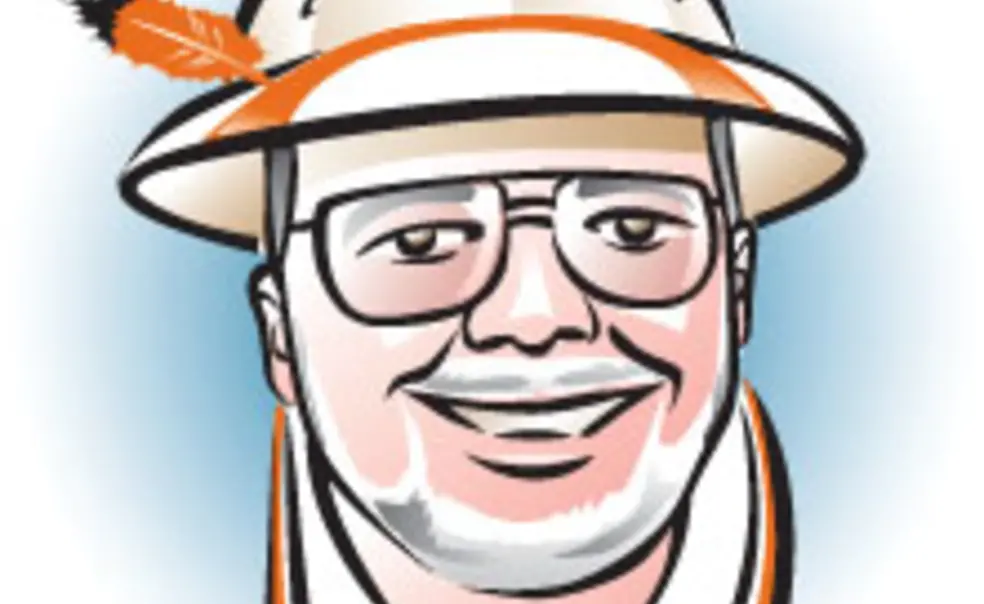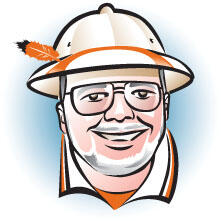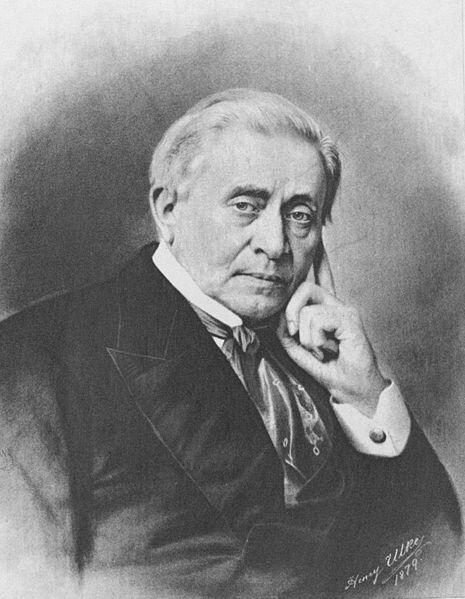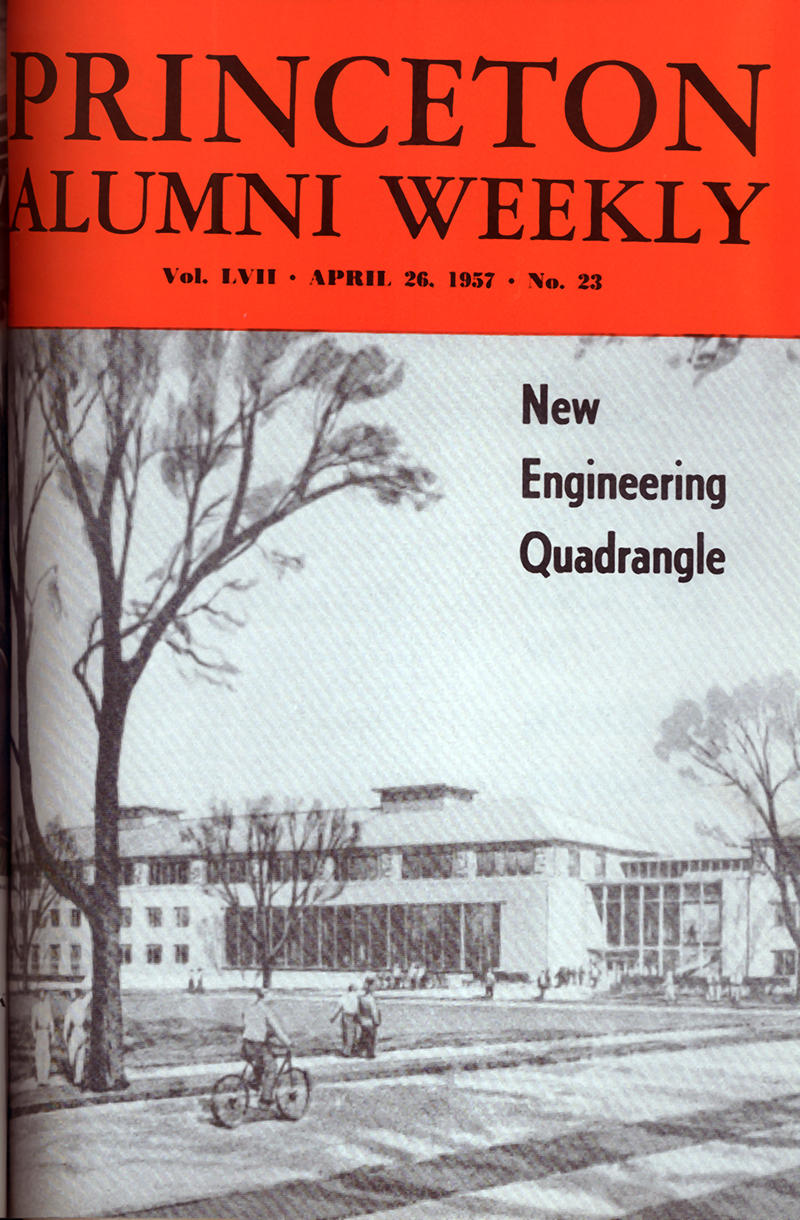“Via ovicpitum dura est,” or, for the benefit of the engineers among you:
“The way of the egghead is hard.”
–Adlai Stevenson ’22
The other day I was checking up on the progress of Aspire. You will recall (unless the development office has lost track of you, which is as likely as your pet ferret falling through a wormhole onto Betelgeuse) that the current capital campaign, having had the luck to encompass one of the worst financial meltdowns in American history, marches on bravely until mid-2012. It will probably reach its $1.75 billion – repeat, “b” for billion – goal by then. This is a good thing, although the magnitude is disorienting.
So in trolling around for some solid mooring beyond the numbers, I came across two items that got me thinking – a mixed blessing, as we all know. First, there is the overall strategy statement of the campaign: “Princeton aspires [oooh, clever wordsmithing] to be a great research university with the heart and soul of a liberal arts college.” Hardly contentious, and a running start toward raising an ungodly amount of money to be sure. Second, in the enumeration of the needs of the University, there’s a significant $325 million capital item for engineering, couched in the terms of “a sustainable society.” This sounds green and positive, and I hope all my friends with $10 million sign on, but my question for today is different: What do these two items have to do with one another?
As we celebrate the 90th anniversary of the engineering school (would an exhibit of award-winning slide rules be appropriate?) and its many achievements, why do we have one? Megalomaniacal Harvard managed to do without one until 2007, believe it or not. And more pressingly, what’s the relationship of “the heart and soul of a liberal arts college” with Phobetor?
This view recurred bigtime in 1832, when Rev. John Maclean Jr. 1816 – tellingly, the son of a chemistry professor – brought in professor Joseph Henry, whose claim to fame was having built the world’s largest electromagnet for Yale. He promptly built a bigger one for Princeton, and became not only the cornerstone of the physical sciences here, but subsequently the founding director of the Smithsonian. Even after going to Washington, he lent his prestige to the faculty, who as early as 1864 urged Maclean, by then College president, to establish a School of Science. By 1871, new president Rev. James McCosh was convinced (again with Henry’s support), and crucially John C. Green (green!), wealthy great-great-grandson of President Dickinson, had arrived. He backed McCosh to the tune of a couple of million non-inflated dollars for a huge expansion including Dickinson Hall, Chancellor Green library, the new Green School of Science, the Joseph Henry Chair in physical science, and a chair in civil engineering. Charles Macmillan filled the engineering chair and taught the first Princeton engineering course. Cyrus Brackett got the physics chair and created the school of electrical engineering, a grad program, in 1889.
This energized the trustees and President John Grier Hibben 1882 – yet another clergyman devoted to the applied sciences, as it happened – and in 1921 they created the School of Engineering with civil, electrical, mechanical, chemical, and mining engineering departments and hired the enthusiastic Arthur Greene (green!) from Rensselaer Polytechnic Institute as its dean. He quadrupled the number o f students in his 18 years and oversaw the construction of the new Engineering Laboratory, dedicated in October 1928. Eerily their prior home, the old Green School of Science, burnt spectacularly 11 days later. The new building became John C. Green Hall (green!), and remains so today. By then the school curriculum had gelled, too, with a common first year including science, math, English, and foreign language, followed by differentiated programs in each department. The precise balance of the program, unusual for the time, was 29 percent arts, 40 percent sciences, and 31 percent engineering.
By 1940, Greene had quadrupled the number of engineering students to almost 400; his successor, Kenneth Condit 1913, in his 14-year term expanded it to more than 600, including the new aeronautical engineering department. Engineers by then were spilling out of Green Hall and a host of semi-nearby nooks and crannies. Joseph Elgin *29 succeeded Condit as dean in 1954 and set about a two-pronged attack that dramatically changed the school. First, he re-emphasized science as its basic technical foundation rather than technology and skills, which he felt should be learned in industrial apprenticeships; this brought the program even closer to the arts and sciences and the “heart and soul of a liberal arts college.” And second, he developed an $8 million plan for a new building to house the burgeoning school and plastered the concept drawing (the eventual E-Quad turned out to look – umm – different) on the cover of Your Favorite Periodical.
capital campaign for $53 million
Elgin retired in 1971, with his scientifically oriented students now pulling down 50 Ph.D.s per year (vs. seven in 1954). His successor, Robert Jahn ’51 *55, put the final piece on the table for Aspire: Only 10 years after Rachel Carson’s Silent Spring and only two years after the first Earth Day, in 1972 he introduced interdisciplinary Environmental Studies and Energy Conversion & Resources programs (green!) to underscore the importance of engineering to everyday life and societal issues.
And so here we are 40 years later, raising $325 million for Engineering and a Sustainable Society (green!). The very first sentence of the case presentation in the campaign literature points out that “at Princeton, engineering interacts in an unusually close way with the natural sciences, social sciences, and humanities departments.” And while a few things have changed around the E-Quad – there’s a magnificent new engineering library, 30 percent of the B.S.E. degrees now go to women, I won’t even get into what the heck ORFE is – the core of the school still focuses on the very liberal-artsy idea of Princeton as training for service, not trade.
It also corresponds stunningly to the philosophy of the school’s guiding light, Joseph Henry, whose advice 150 years ago was to “become an efficient, wise, and good man. I say efficient and wise; because these two characteristics are not always united in the same person. Indeed, most of the inefficiency of the world is due to their separation; wisdom may know what ought to be done, but requires the aid of efficiency to accomplish the desired object. I hope that in the education of your son due attention may not only be given to the due development of both these faculties, but that they will be cultivated in the order of nature: that is, doing before thinking; art before science.”
That would explain a good deal about Phobetor and his fruitcake.















No responses yet